Worried about messing up your woodworking project with a big, uneven hole? I get it. I’ve been there, staring at a piece of wood, wondering how to make a clean, large hole without causing a disaster.
So, how do you cut a large hole in wood? You can use tools like hole saws, spade bits, or Forstner bits. Hole saws are great for making very large holes, while spade bits work well for quickly drilling deep holes. Forstner bits create clean, flat-bottomed holes, perfect for woodworking projects where precision matters.
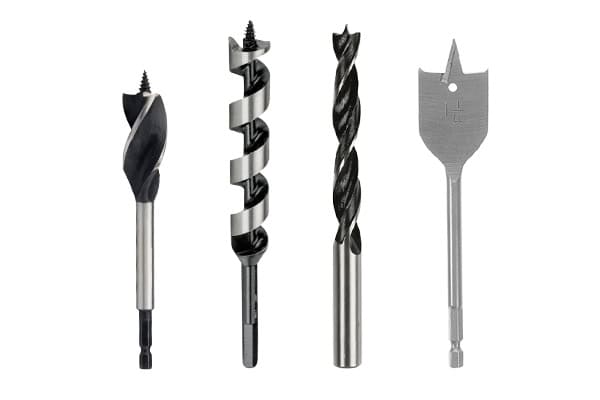
That was a basic overview, but now let’s get into more details so you can feel confident in your next project.
What Type of Drill Bit is Recommended for Use on Plywood?
Plywood splintering got you down? I know the feeling! I once ruined an entire sheet of expensive plywood because I used the wrong drill bit. The edges were so frayed, it looked like a beaver had attacked it.
So, what drill bit is best for plywood? For plywood, I recommend using a brad point drill bit. These bits have a sharp point that helps prevent the drill from wandering and reduces splintering. Twist drill bits designed for wood also work well. If tear-out is a concern, try sandwiching the plywood between two scrap pieces of wood.
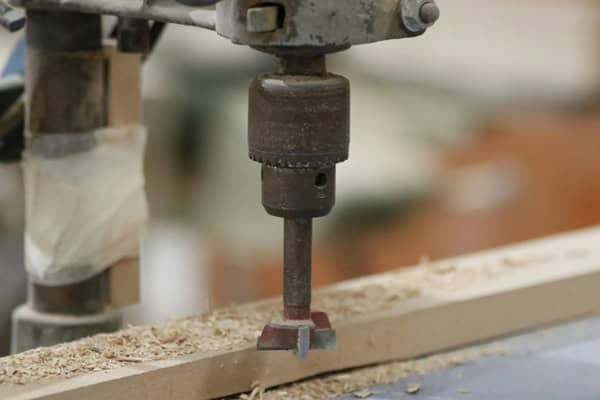
Choosing the Right Drill Bit for Plywood
Plywood can be tricky. It’s made of layers of wood1 glued together, and these layers can easily splinter if you don’t use the right technique2. Here’s a breakdown to help you choose:
| Drill Bit Type | Pros | Cons | Best For |
|---|---|---|---|
| Foret à pointe Brad | Sharp point prevents wandering, reduces splintering. | Can be more expensive than standard twist bits. | Clean, precise holes in plywood, especially for fine woodworking. |
| Wood Twist Drill Bit | Good for general use in wood, can create clean holes with care. | May cause some splintering if not used carefully. | General-purpose drilling in plywood. |
| Scie cloche | Ideal for very large holes. | Can be aggressive and cause tear-out if not used properly. | Large diameter holes for pipes or other round objects. |
When working with plywood, always start with a sharp bit3 and drill at a moderate speed. Using a backing board4 (a piece of scrap wood placed behind the plywood) can significantly reduce splintering as the drill bit exits the wood. Also, consider using painter’s tape over the drilling area to further minimize tear-out.
What Drill for Deep Holes in Wood?
Ever tried drilling a super deep hole, only to have your drill bit get stuck halfway? I definitely have. I was trying to run some wiring through a thick beam once, and it turned into a real headache until I got the right drill bit.
So, what drill is best for deep holes in wood? For drilling deep holes in wood, I recommend using an auger bit or a ship auger bit. Auger bits are designed with a screw-like tip that pulls the bit through the wood, efficiently removing chips and debris. Ship auger bits are longer and better suited for even deeper holes.
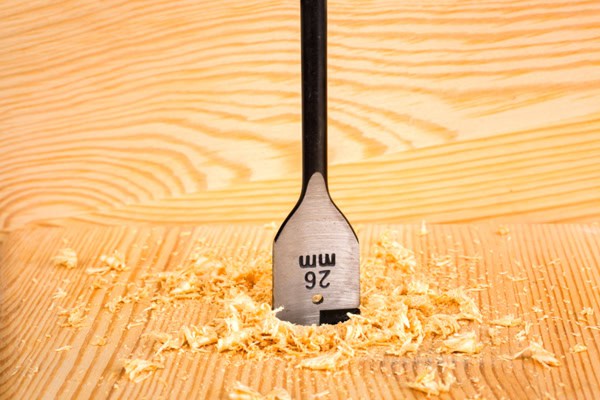
Selecting the Right Drill for Deep Wood Drilling
Drilling deep holes requires a bit that can effectively remove material and won’t bind up as you go deeper. Here’s a more detailed look at your options:
| Drill Bit Type | Pros | Cons | Best For |
|---|---|---|---|
| Auger Bit | Self-feeding, efficient chip removal, good for general deep holes. | Can be aggressive, requiring a firm grip. | Drilling deep holes for running wires or pipes. |
| Ship Auger Bit | Longer than standard auger bits, ideal for very deep holes. | Can be more expensive and may require a drill with sufficient power. | Extremely deep holes in timber or beams. |
| Extension Bit | Allows standard bits to drill deeper. | Connection points can introduce wobble, and may not be suitable for precision work | Extending the reach of smaller drill bits for moderately deep holes. |
When using an auger bit5, make sure to clear the chips frequently to prevent the bit from binding. Also, use a drill with enough power to handle the bit. For very deep holes, consider using a two-step drilling process6: start with a shorter bit to create a pilot hole7, then switch to the longer auger bit.
Why Does the Drill Bit Get Hot When Drilling into Wood?
Ever noticed your drill bit getting super hot while you’re working? I remember one time, I was drilling a bunch of holes for a project, and the bit got so hot I could smell burning wood!
So, why do drill bits get hot when drilling into wood? Drill bits get hot due to friction. As the bit spins and cuts into the wood, friction between the bit and the wood generates heat. Dull bits, high drilling speeds, and excessive pressure can all increase friction and cause the bit to overheat.
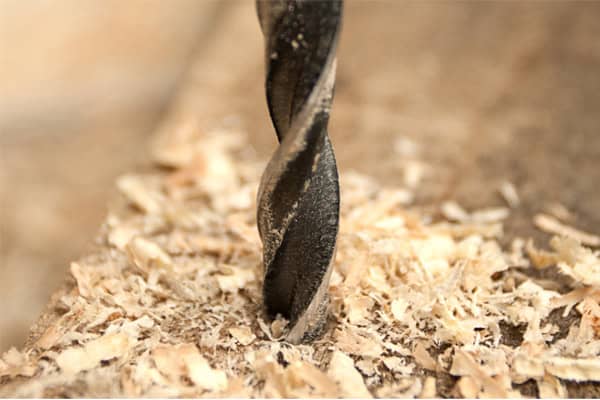
Understanding and Preventing Drill Bit Overheating
Overheating can not only damage your drill bit but also potentially start a fire. Here’s what you need to know:
| Cause | Prevention | La solution |
|---|---|---|
| Dull Bit | Regularly sharpen or replace dull bits. | Use a drill bit sharpener or replace the bit. |
| High Drilling Speed | Use a lower speed, especially for hardwoods. | Reduce the drill’s RPM to decrease friction. |
| Excessive Pressure | Apply steady, moderate pressure; let the bit do the work. | Ease up on the pressure and let the bit cut at its own pace. |
| Inadequate Chip Removal | Ensure the bit is designed for efficient chip removal (like auger bits). | Clear the hole periodically to remove accumulated debris. |
To prevent drill bit overheating, consider using a lubricant like beeswax or specially formulated cutting fluid. This will help reduce friction and keep the bit cooler. Also, take breaks to allow the bit to cool down, especially when working with hardwoods. Regularly inspect your drill bits8 for signs of wear and tear, and replace them as needed.
What is an Auger and How do you Use it to Dig Holes?
Confused about augers? I was too, at first! I thought they were just for boring holes in wood. Then I realized how useful they are for all sorts of projects involving wood.
So, what is an auger and how do you use it to dig holes? An auger is a drilling device with a screw-shaped bit, primarily used for making deep holes in wood. To use one, position the tip where you want to drill, apply downward pressure, and rotate the auger. The screw design pulls the auger into the wood, removing debris as it turns.
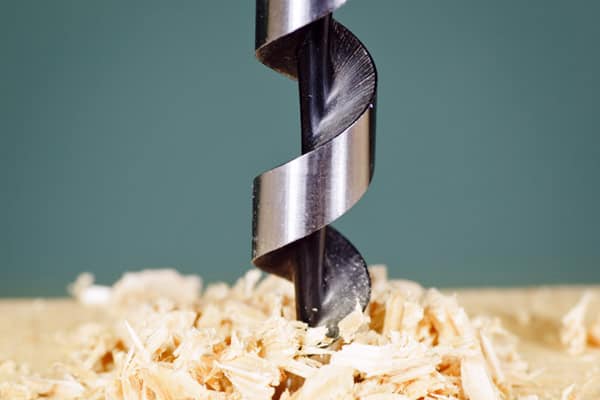
Mastering the Auger for Woodworking Applications
Augers come in different types and sizes, each suited for specific woodworking tasks. Here’s a more detailed look:
| Auger Type | Pros | Cons | Common Uses |
|---|---|---|---|
| Wood Auger | Efficient chip removal, self-feeding, creates clean holes. | Can be aggressive and require a firm grip. | Drilling deep holes in timber for wiring or plumbing. |
| Ship Auger | Longer than standard augers, ideal for very deep holes. | Requires a drill with sufficient power. | Drilling very deep holes in beams and thick lumber. |
When using a wood auger, maintain a steady and consistent pressure to allow the bit to dig efficiently. Avoid forcing the auger, as this can damage the bit or the wood you’re working on. Ensure the wood is securely clamped to prevent movement during drilling. Always wear safety glasses when operating an auger. Also, different materials require different auger designs. For example, earth augers exist, but are specifically designed for drilling into soil.
Conclusion
Drilling large holes in wood doesn’t have to be a daunting task. By selecting the right drill bits and understanding how to use them properly, you can create clean, accurate holes for all your woodworking projects.
-
Understanding the benefits of layered wood can enhance your plywood projects and improve durability. ↩
-
Learning the right techniques can save you time and material, ensuring a clean finish on your projects. ↩
-
Learning about the importance of a sharp bit can lead to cleaner cuts and better overall results in your woodworking. ↩
-
Understanding the role of a backing board can enhance your woodworking skills and reduce damage to your projects. ↩
-
Understanding auger bits can enhance your drilling skills and project outcomes. Explore this resource for detailed insights. ↩
-
Learn about the two-step drilling process to improve efficiency and accuracy in deep hole drilling. This resource provides valuable techniques. ↩
-
Discover the significance of pilot holes in drilling to prevent bit binding and ensure precision. This link offers essential information. ↩
-
Understanding the importance of regular inspection can help maintain your tools and ensure safety during use. ↩